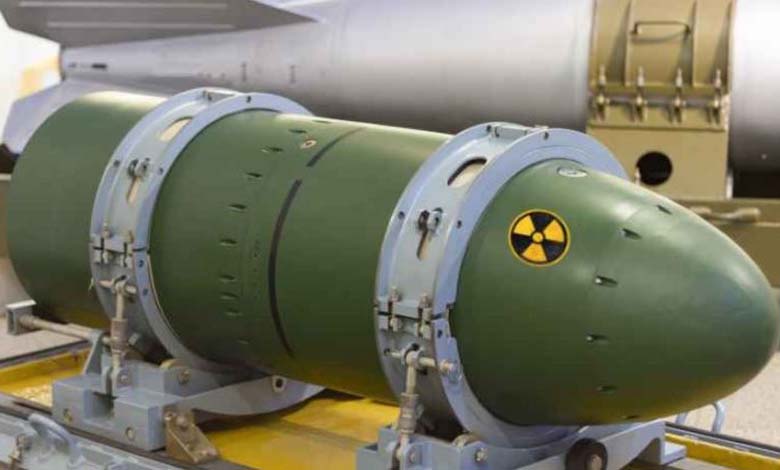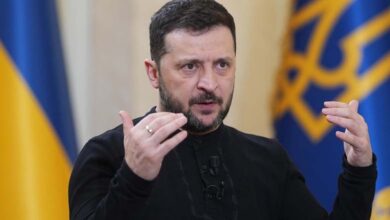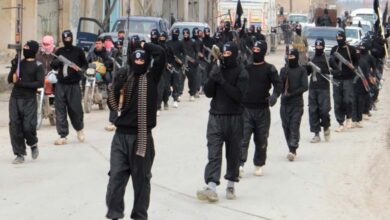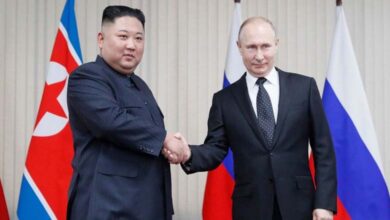“The Russian Hell” shakes Ukraine… Learn about the “Doomsday” bomb

From time to time, the term “Doomsday” is associated with weapons to highlight their destructive power, to the extent that one might think the horrors of Doomsday have occurred in their place.
Yesterday, Monday, videos from Russian media showed a Sukhoi 34 aircraft dropping the Russian FAB 3000 bomb, also known as the “Doomsday” bomb, during flights over Ukrainian military areas.
Russia is increasingly using glide bombs in the war in Ukraine, old munitions upgraded with new guidance systems allowing them to be launched remotely.
This is a major advantage that has allowed Russia to inflict devastating damage on Ukrainian targets, with aircraft able to drop bombs from a sufficient distance that Ukraine often cannot intercept the planes dropping them.
Ukrainian Foreign Minister Dmytro Kuleba said last March that Russia had dropped 700 glide bombs on Ukraine between March 18 and 24.
Experts believe the only way Ukraine can properly defend against these types of bombs is by intercepting Russian aircraft before they drop the bombs, or by striking the plane while it is still on the ground, according to the American site “Business Insider”.
However, the United States says Ukraine cannot use the long-range equipment provided to strike military targets deep in Russia, meaning Ukraine cannot target many Russian airports.
What are Doomsday bombs? Russia has begun producing large quantities of the massive, high-explosive FAB 3000 bombs. These bombs weigh about 3 tons, comparable to tactical nuclear bombs.
The Russian Ministry of Defense announced in late March the start of large-scale production of the high-explosive aerial bombs FAB 3000.
Former Defense Minister Sergei Shoigu then inspected the implementation of the Defense Ministry’s decision at military-industrial complex facilities in the Nizhny Novgorod region.
The FAB 3000 bomb, equipped with wings, is dropped from the air towards its target, and the bomb rotates 180 degrees after its fall to correct its gliding trajectory. Upon impact with its target, it inflicts severe damage to fortifications and infrastructure.
Doomsday ammunition In addition to these bombs, Russia has increased the volume of ammunition known as Doomsday by reprocessing the 53-F-864 ammunition used by the 240 mm caliber heavy mortar Tulpan.
Such powerful weapons have entered the reserves of the Russian Armed Forces’ General Command, and they have been called “Doomsday” weapons because they can use nuclear mines with a yield of up to 2000 tons of trinitrotoluene, according to “Rossiyskaya Gazeta”.
However, classic non-nuclear mines launched by the Tulpan mortar have proven effective in Afghanistan in the 1980s and in the North Caucasus in the 1990s for destroying targets in areas difficult for field aircraft to access and for destroying fortified structures.
-
Ukraine Attacks Occupied Melitopol, Russian Side Says Two Killed
-
Ukrainian village bombed… Russian separatists and Kyiv blame each other for cease-fire violations
The mortar stock includes several types of 240 mm mines, including laser-guided active jet mines that can be launched up to 20 kilometers away, with a destruction probability of up to 90%.
Thus, along with the 3-ton FAB-3000 bombs and military engineering units, such ammunition ensures that defensive installations that the Ukrainian army is building along the front line are hit.












